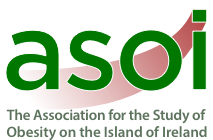Sarcopenia, Diet, Physical Activity and Obesity in European Middle-Aged and Older Adults: The LifeAge Study
- Categories: Dietary Studies, Older Adults, Physical Activity/Exercise, Public Health
Type Article
Journal Article
Authors
P. J. Marcos-Pardo; N. González-Gálvez; A. López-Vivancos; A. Espeso-García; L. M. Martínez-Aranda; G. M. Gea-García; F. J. Orquín-Castrillón; A. Carbonell-Baeza; J. D. Jiménez-García; D. Velázquez-Díaz; C. Cadenas-Sanchez; E. Isidori; C. Fossati; F. Pigo
Year of publication
2020
Publication/Journal
Nutrients
Volume
13
Issue
1
Pages
Abstract
The revised European consensus defined sarcopenia as a progressive and generalized skeletal muscle disorder that is associated with an increased likelihood of adverse outcomes including falls, fractures, physical disability and mortality. The aim of this study was to determine the prevalence of sarcopenia and analyse the influence of diet, physical activity (PA) and obesity index as risk factors of each criteria of sarcopenia. A total of 629 European middle-aged and older adults were enrolled in this cross-sectional study. Anthropometrics were assessed. Self-reported PA and adherence to the Mediterranean diet were evaluated with the Global Physical Activity Questionnaire (GPAQ) and Prevention with Mediterranean Diet questionnaire (PREDIMED), respectively. The functional assessment included handgrip strength, lower body muscle strength, gait speed and agility/dynamic balance. Of the participants, 4.84% to 7.33% showed probable sarcopenia. Sarcopenia was confirmed in 1.16% to 2.93% of participants. Severe sarcopenia was shown by 0.86% to 1.49% of participants. Male; age group ≤65 years; lower body mass index (BMI); high levels of vigorous PA; and the consumption of more than one portion per day of red meat, hamburgers, sausages or cold cuts and/or preferential consumption of rabbit, chicken or turkey instead of beef, pork, hamburgers or sausages (OR = 0.126-0.454; all p < 0.013) resulted as protective factors, and more time of sedentary time (OR = 1.608-2.368; p = 0.032-0.041) resulted as a risk factor for some criteria of sarcopenia. In conclusion, age, diet, PA, and obesity can affect the risk of having low muscle strength, low muscle mass or low functional performance, factors connected with sarcopenia.
